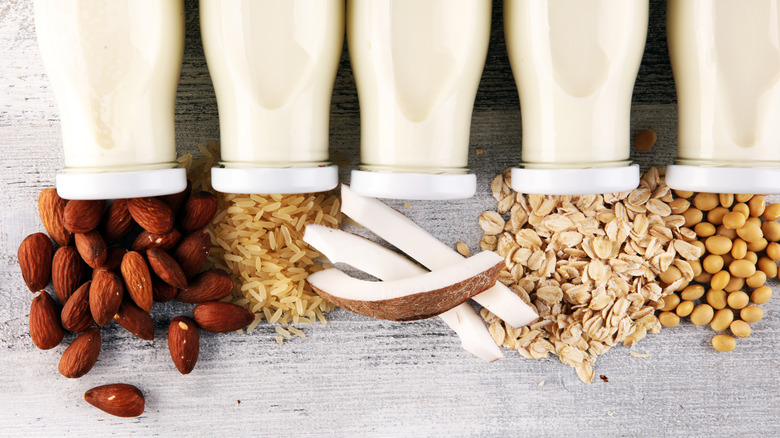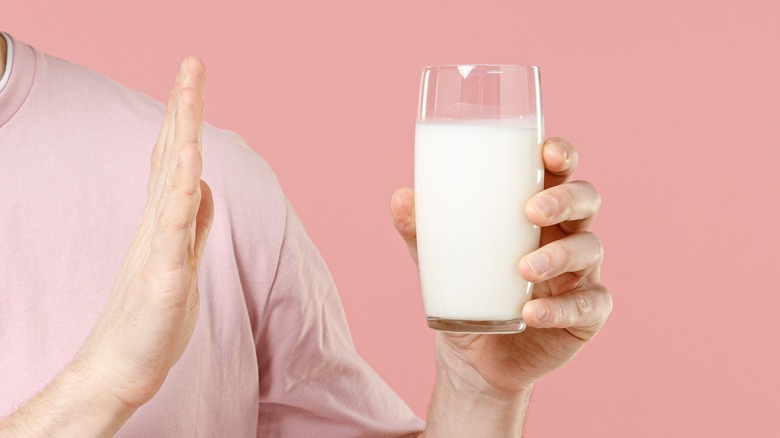The Term Dairy-Free Doesn't Necessarily Mean What You Think
There is no shortage of food labels in modern shopping, many of which have to do with the exclusion of certain ingredients. Whether something is soy-free, sugar-free, fat-free, low-sodium, or anything else, each label exists to inform consumers and help them make important dietary decisions. However, despite labeling stating the nonexistence of certain ingredients, that might not always be the case. This is especially true of non-dairy or dairy-free products.
If you're allergic to dairy or trying to cut it out of your diet for any number of reasons, take note. To the consumer, dairy-free and non-dairy mean the same thing: that the product is devoid of dairy. However, you need to watch out. The FDA once allowed foods labeled as non-dairy to contain 0.5% milk proteins, or caseinates. The idea was to help dairy consumers rather than those on a dairy-free diet: It was to prevent dairy consumers from mistaking low-milk products with actual dairy-free products.
This caused obvious confusion and the FDA dropped the allowance, but that means that now, no dairy-free labels are clearly regulated by any governing body. The FDA does regulate against false information on packaging, but the truth is that confusion still exists. Therefore, you cannot be absolutely sure just by looking at those labels that a product has been made without dairy, or hasn't been processed in a dairy facility. Now, most products labeled as dairy-free are just that. But always read the ingredients to make the most informed decision possible.
How to know if something is really dairy free
Now that you're thoroughly disenchanted and skeptical about labels, rest assured that companies are legally required to show all their contents, per the FTC. So, here's how you can figure out what is actually dairy-free and what isn't. A big area of confusion has been around coffee creamers. Many that have historically been labeled as non-dairy or dairy-free creamers have actually met that old FDA 0.5% milk protein or less rule. If you read the ingredients, many actually contain dairy products.
However, you don't have to get into the nitty-gritty with every type of coffee creamer to make sure it is dairy-free. Any dairy-free coffee creamers, or other products for that matter, that are made with plant-based ingredients like rice, soy, oats, coconut, and almonds are fantastic alternatives. When cooking dairy-free dishes, swap butter for coconut oil, or cream for coconut milk. Look out for the ones that are also fortified with additional nutrients like calcium, iron, and iodine.
While the front-facing labeling may cause confusion, if you turn the products over and read the full list of ingredients, you can easily determine if there is actual dairy in there or not. So, keep a sharp eye and thoroughly read your labels — back and front.

